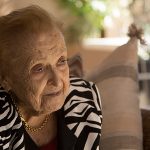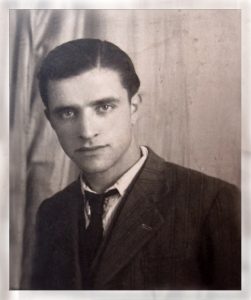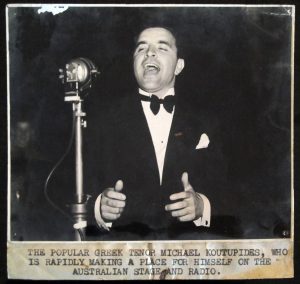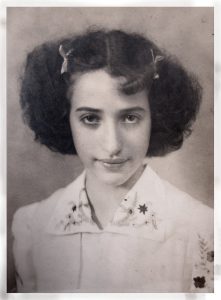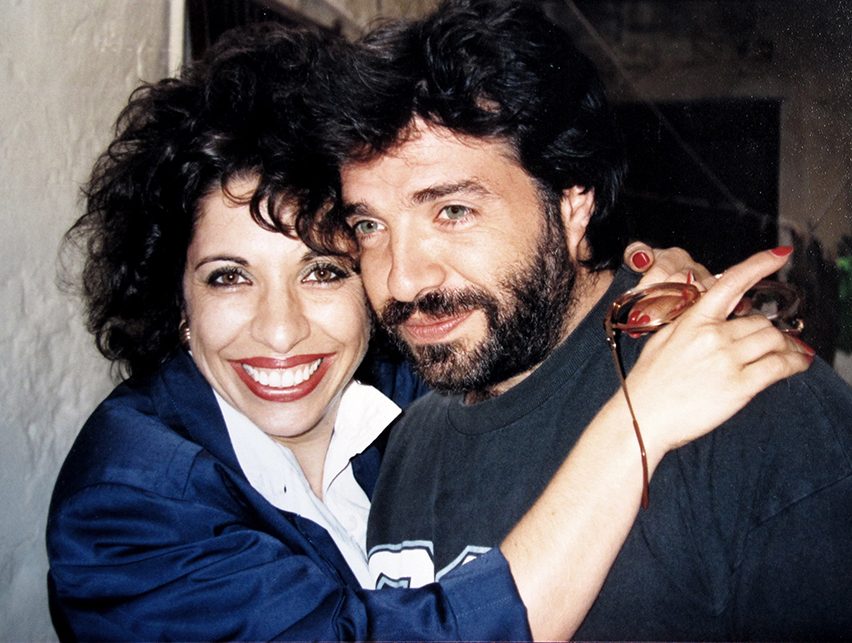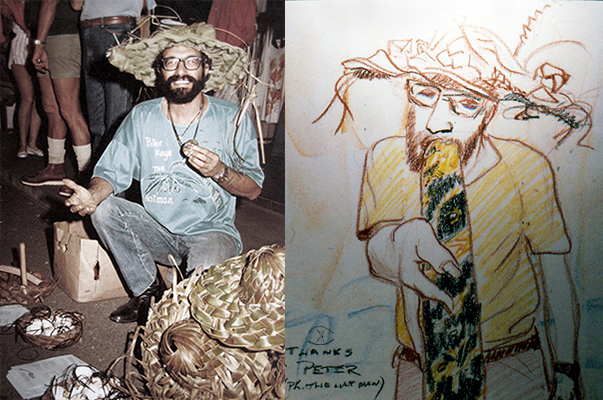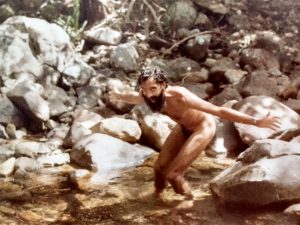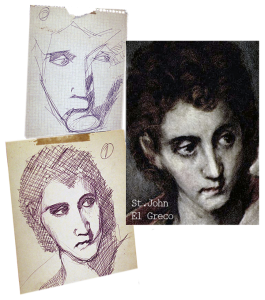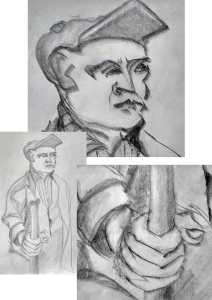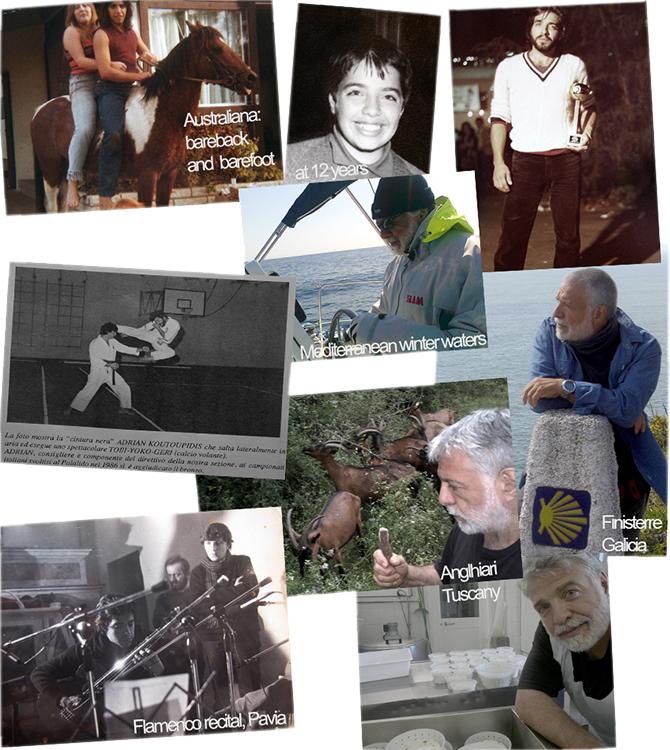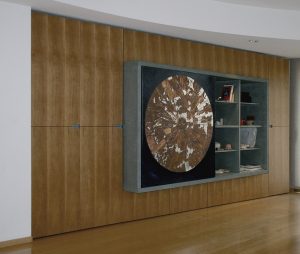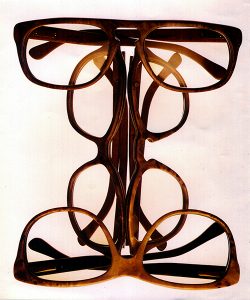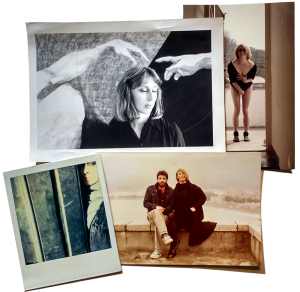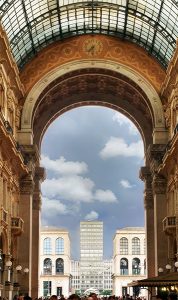_____________________________________________________
Art is, above all, ideas and emotions.
Early on in the game, I felt something was persistently wrong,
and I was determined to find out what it was.
Introduction: taking stock, a brief biological note and statement.
A Greek name appears on my Australian and Italian passports ... it reads, Adrian Koutoupidis. I was born in Brisbane in April 1955, the son of Greek immigrants from Kastellorizo, the east-most inhabited island of Greece, just off the Turkish coast, where Europe ends and Asia begins. My surname is the anglicized version of my father’s original, Kutupé, the pseudonym that appears on my artwork.
Here, is where my conservatism ends. I have been living and travelling outside of Australia since 1975, mainly in Italy.
Part One: Origins (brief)
I was the youngest of three children in an unconventional and creative family. My father was born in Russia to Greek parents at the beginning of the 20th century. My mother was born in Australia, also a child of Greek immigrants.
Coincidentally, both my parents' generations came from the same Greek island, Kastellorizo, prosperous and strategically positioned in the far east of the Mediterranean Sea and fiercely contested by the imperial powers of the day. The strong cultural influence of Turkey, geographically only 2 kilometers away, is evident in the etymology of local surnames (including my own) and the presence of a mosque, situated at one end of the deep harbor. But the island was subjected to many foreign occupations and devastation during the 20th century; Italian, German, French, British. After WWII, and much international deliberation, Kastellorizo finally returned to Greek rule in 1948.
During the first half of the 20th century, there was strong pressure to emigrate and the island was practically abandoned.
Kastellorizo, from prosperity to adversity.
After the Russian revolution, my father’s family, who had emigrated to Russia at the beginning of the 20th century, lost everything and from Ekaterinburg (my father's birthplace), returned to continental Greece. As a boy working in the fish markets of Piraeus, to a youth working in outback Australia, my father Michael, resourcefully adapted.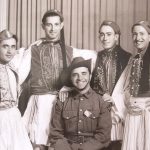 The young man evolved to waiter and cook, “posed” in the Australian army, a became a publican, an opera singer, a gambler and owner of race horses and rest homes. His political and business interests were always upwardly bound.
The young man evolved to waiter and cook, “posed” in the Australian army, a became a publican, an opera singer, a gambler and owner of race horses and rest homes. His political and business interests were always upwardly bound.
He was a loving and generous, but traditionally severe parent.
My mother, Helena (Georgerous), went to school for as long as her parents could afford. Traditionally, the male siblings in her large family were privileged in being able to continue their studies. She found herself, little more than a child, employed as a seamstress, walking across the bridge from West End (the original Greek immigrant quarter), over the Brisbane River to the city center. From these humble beginnings, and with the help of my father, she became the top fashion designer for the elite of the city, founding The Fashion House of Helena Kaye and Helena Kaye Dressmaking Academy. Her fashion house became an iconic symbol for the entire state and beyond. She expressed the essence of refined elegance. (see some of Helena's creations)
My sister Christina, strong in personality and creativity, excelled in the visual arts, singing and theatre and continued successfully in our mother’s business. Peter, the eldest sibling and quite an alternative character, sailed the Great Barrier Reef for more than forty years, becoming well-known in the tourist markets, writing and studying guitar and didgeridoo while creating a million dollar business.
For myself, I was a tranquil and reflective type despite my dynamic and affluent family. At the age of 12, my parents took me out of school for over three months to visit Greece, Italy, France and the USA. I gained a new appreciation for my Greek heritage that had been somewhat of a stigma in my Australiana, Anglo-Saxon environment of the 60's. In those days, the land down under was never kind to the immigrant peoples but nonetheless this served as a stimulus to go beyond the limits of place and reason and culture and helped form my personal vision of the world.
From those youthful experiences, my areas of interest grew far and wide. Over the years, though I didn’t need to, I worked during school holidays as a delivery boy, brickies' laborer, a galvanic metal worker and factory hand in a big tropical fruit cannery in Brisbane (here, as a minor, I lied about my age so I could get the harder work that paid better).
And playing a wide variety of sports in Australia was inevitable; soccer and martial arts (also pursued in Italy) were my favorites. In my early teens, I started playing flamenco guitar (but after 25 years, because of chronic physical problems with my hands, I had to abandon) and most importantly, I drew regularly.
 With more stimulus and curiosity, I moved from many years of formal schooling in technical drawing to a much more artistically creative, and even esoteric focus. Along with the example of my father's the sweeping archetype, I was forming a basis for critical observation that would become the foundations for the rest of my eclectic life and the inquisitive nature of my art-direction. At this point, the lack of cultural depth and opportunity was making the laid-back Australian lifestyle of the day, quite a tight fit.
With more stimulus and curiosity, I moved from many years of formal schooling in technical drawing to a much more artistically creative, and even esoteric focus. Along with the example of my father's the sweeping archetype, I was forming a basis for critical observation that would become the foundations for the rest of my eclectic life and the inquisitive nature of my art-direction. At this point, the lack of cultural depth and opportunity was making the laid-back Australian lifestyle of the day, quite a tight fit.
(These, and the initial Italian years, were some of the most formative periods of my life.)
Too soon.
My father died unexpectedly when I was seventeen, on the morning of my final exam of my final senior year of high school. The funeral at the Brisbane Greek orthodox church overflowed with people, most of whom I did not know. The many anecdotes about my father's humanity that accompanied their condolences were moving and my frustration in all this was intimately felt.
That wealth of experience, needed to complete a better understanding a real-world context was 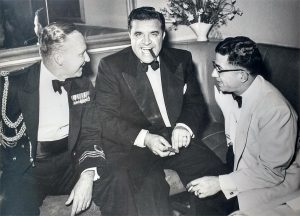 gone forever, leaving me with only the many stories of the many friends I hardly knew, if at all; from the legendary dinners he prepared to the legendary gambling bets, won and lost, the singing performances on an Italian cruise ship, the political escapades with mayors and governors, some I witnessed most I did not; the needy immigrant families he generously helped privately and as the president of the Queensland Migrant Advisory Council. I knew little of all this, and my need to know more directly from him was no longer possible.
gone forever, leaving me with only the many stories of the many friends I hardly knew, if at all; from the legendary dinners he prepared to the legendary gambling bets, won and lost, the singing performances on an Italian cruise ship, the political escapades with mayors and governors, some I witnessed most I did not; the needy immigrant families he generously helped privately and as the president of the Queensland Migrant Advisory Council. I knew little of all this, and my need to know more directly from him was no longer possible.
His presence, was strong and felt, his absence, it seemed would be even more. So little remained ... too little.
Part Two: Time Lapse – some biographical incidentals
At the age of twenty, after some university and minimally serious work experience, an opportunity presented itself (another story) and I left Australia by myself on a one-way ticket to Italy. Alone, 20 years old, I departed in August of 1975. My mother, accepted the inevitable (silently, she knew).
In those years, mid-summer Rome was deserted. After staying in the Italian capitol for a brief period of time, I went to Carloforte, a small town on an island, off the south-west coast of Sardinia. Here, I had some contacts. I ended up living in a semi-abandoned farmer’s house on the cliffs of an isolated part of the island with no electricity or running water. For more than a year, this was my home and certainly more than the opposite of what I was accustomed. But I wanted, and had to make the most of it. After all, this was the opportunity for which I was unconsciously waiting; new language, new culture, new socio-economic status. I survived on fishing and odd jobs around the island. For all the hardships, this was the best thing that could have ever happened to me.
(Also, during that initial period in Sardinia, disturbing political events took place in Australia. In December of 1975, "The Dismissal" of the Prime Minister, Gough Whitlam by Governor-General Sir John Kerr, the Queen’s representative, left me shocked and angry and in no hurry to return to Australia. Seven years would pass before I revisited Australia.)
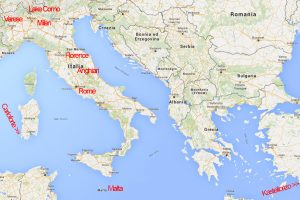 The years and experiences passed quickly. Over the next forty years I’ve lived for extended periods of time in Sardinia, Sliema (Malta), Rome, Florence, Milan, Bellagio and Turate (Como), Gerenzano and Cislago (Varese), Anghiari (Arezzo) while travelling throughout Italy, Europe and beyond. During a period of relative stability in the Milan area, I raised two sons to adulthood with a unique woman of extraordinary generosity and humanity. This fundamental experience of responsibility and learning shed light on new insights and understanding.
The years and experiences passed quickly. Over the next forty years I’ve lived for extended periods of time in Sardinia, Sliema (Malta), Rome, Florence, Milan, Bellagio and Turate (Como), Gerenzano and Cislago (Varese), Anghiari (Arezzo) while travelling throughout Italy, Europe and beyond. During a period of relative stability in the Milan area, I raised two sons to adulthood with a unique woman of extraordinary generosity and humanity. This fundamental experience of responsibility and learning shed light on new insights and understanding.
I lived through the social tensions of the Italian 70's and 80's; this (and the late 60's) was part of the most turbulent period of postwar Italy - gli anni di piombo/the years of lead. Here, I was witness to the frequent violence of mafia abductions, "Black" (fascist) and Red Brigade terrorism, culminating in the "execution" of Aldo Moro (former Italian President); in November 1975, the year of my arrival in Italy, the intellectual Pier Paolo Pasolini was murdered (something that was of great personal impact).
Some life experiences. I have practiced and taught sports, played and taught guitar, labored manually and started businesses. I have been a builder and carpenter in Lombardy, an equestrian guide and blacksmith’s assistant in Piedmont (and Lombardy), kitchen hand in Bardonecchia (Turin) and Florence, raised goats and made cheese in Anghiari (Arezzo) and Luino (Varese) and produced olive oil while working in the farmers’ markets of Tuscany.
I crossed northern Spain, from SW France to Finisterre, 900 km by foot on the Camino de Santiago de Compostela. After earning an ocean-going boat license from the Italian Navy, I helped transport sailing boats from France to Italy and other Mediterranean destinations for a sailing school in Portovenere, Cinque Terre.
My formal education in advanced technical drawing and perspective (and appreciation for Euclid's Elements) helped form both my material and philosophical understanding of the physical universe. This laid the foundations for a real-world pragmatism.
Creatively, beyond painting and sculpture, I’ve designed and worked with wood and textile products (furnishings), and graphic design. I founded a company in Milan that made burl-wood optical frames from 1977 to 1991 after which I became partner in a textile company (Como area) that specialized in fashion accessories. It was during this period of relative stability in the Lombardy region, that made it much easier to produce, show and sell artwork.
Part Three: Art, Methods and Practices. (see Artistic Methods & Sketches & Scraps)
I’ve always sketched and despite all the travelling, I consistently made time for drawing and writing even when my movements made it difficult to properly paint; rarely did I have a studio at my disposal. I managed to "huddled" with some Australian artists in Milano for some time. (An Aussie photographer had a studio space behind the clock at the south end of the Galleria Vittorio Emanuele II - Piazza Del Duomo. Strange!)
When my life became less hectic (late 1980’s), I started showing my work in group exhibitions in Milan and Varese; this is why most of the works shown on this site are in private collections in the Lombardy region. (I was able to retrieve some of the works so I could have them professionally photographed for the fine-art giclée prints that are now available. (see Available Prints)
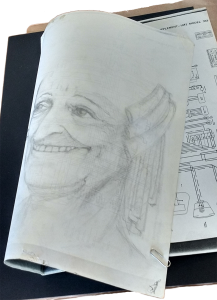 Resources have always been scarce, but I have continuously drawn and painted with what I could find or afford while filling numerous notebooks with in-numerous studies, social commentary, prose and philosophical observations. I often had to draw on both faces of light paper sheets, blank sides of technical catalogue pages, promotional block-note pads, any empty space was put to use. (See Copy That, early studies of some personally relevant artists.) I have painted with profit but I have also lost, damaged and had stolen much of my work during my travels over the years. But that’s experience too ... and another story.
Resources have always been scarce, but I have continuously drawn and painted with what I could find or afford while filling numerous notebooks with in-numerous studies, social commentary, prose and philosophical observations. I often had to draw on both faces of light paper sheets, blank sides of technical catalogue pages, promotional block-note pads, any empty space was put to use. (See Copy That, early studies of some personally relevant artists.) I have painted with profit but I have also lost, damaged and had stolen much of my work during my travels over the years. But that’s experience too ... and another story.
From these chronicles, it is evident that I have learned to vigorously embrace an eclectic existence, an almost impossible condition from which any remunerative career can be built. However, with all its uncomfortable drawbacks, the material hardships and even the famine, it remains the most universal mechanism for understanding life’s intrigues in any meaningful sense; and it becomes easy to imagine that it is through the consequential universal vision that truth, reality and fiction can most likely to be sorted out … the ambitious intention of the immigrants’ little boy from so far away in time and space.
Most importantly, I have come to learn that art, in all its forms, is an essential instrument for understanding the true nature of our social context and eventually, life itself.
(Possibly, to be continued ...)
Part Four: Anticipation and reflection on the state of the arts ... and finally, to the point.
When living in Italy, the masters’ shadows fall dauntingly and inevitably on your path. There is risk and challenge and fear of defeat, but be it through recklessness or courage, one must attempt an authentic artistic discourse while keeping a respectful distance from these precursors of our acquired culture.
However, some things are worrisome; the art-world is inhabited by ignominious little creatures, the art-workers that meander and adapt to creative exhaustion; cloth-less emperors preside over a growing cultural wasteland that may still prove too far-gone to correct. Here, true (artistic) expression can become a withdraw and isolated affair of distressing irrelevance. (See Artistic Methods)
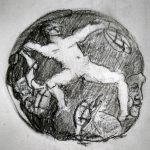
In the midway of this our mortal life, after embracing creative ideals in art and being, a need can arise to take stock and verify the state of reality. Visual arts, my preferred choice of expression, has always been a form of investigation and discovery in this matter. This website is an endeavor to reassume the many visual and dialectic observations experienced over the decades of disdained conformity, while expressing the fundamental eclectic nature of holistic reasoning and understanding. It hopes to go beyond the mere presentation of any artwork, stimulating interest, response and intervention from the observer in a dialectic process that is at the core of any evolutionary process.
A Final Consideration: after the struggles of the past, the future will never be the same.
"If it is art, it is not for all, and if it is for all, it is not art. " Arnold Schoenberg. However, though art may not be for everyone, it should be. This is a decisive responsibility.
Art always tells the truth, even when it lies. It is always contemporary, even when it’s not. Its universal actuality and significance survives even the bloodiest of deontological battles. It is the critical capacity of the guardians of culture to decipher and rescue art’s integrity that has been fiercely compromised. Only in as much as true criticism exists, can true art exist.
Originating from the mind, art's material expression is the crucial moment of compromise that puts the creative spirit to task and risk; it can be legitimately considered that ART itself needs no "canvas” and can indeed, be a moment of esoteric adventure. No matter how sublime the result, how exquisite the craft, no medium can convey the instigating sentiment and art's entangled pilgrimage to the distant observer. And the more meaningful is the art, the truer this becomes. But then again, this material artifact (the artwork) becomes a metaphor for dialectic self-interrogation of significant importance, firstly to the artist as creator and then to the beholders of the final opera. This is the dynamic process that should define true art’s purpose and render it fundamental and positive beyond any desire for conformity ... and often the occupation of clowns and buffoons. (See Statements)
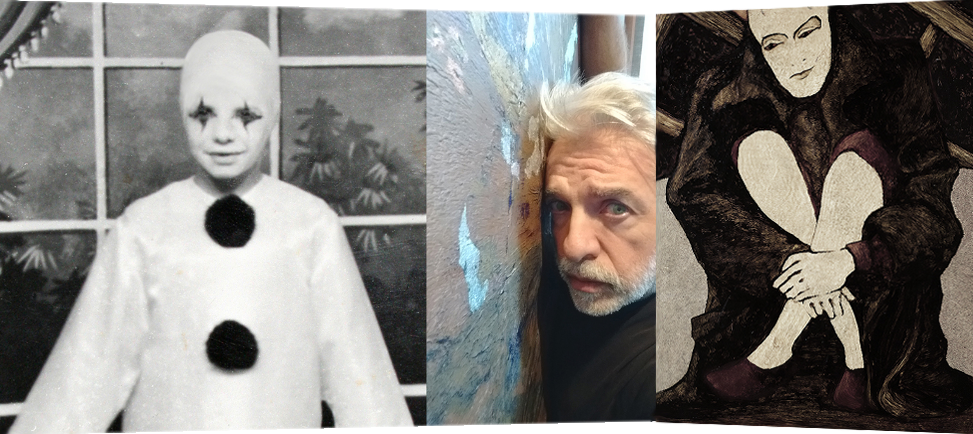
(Definitely to be continued ...)



